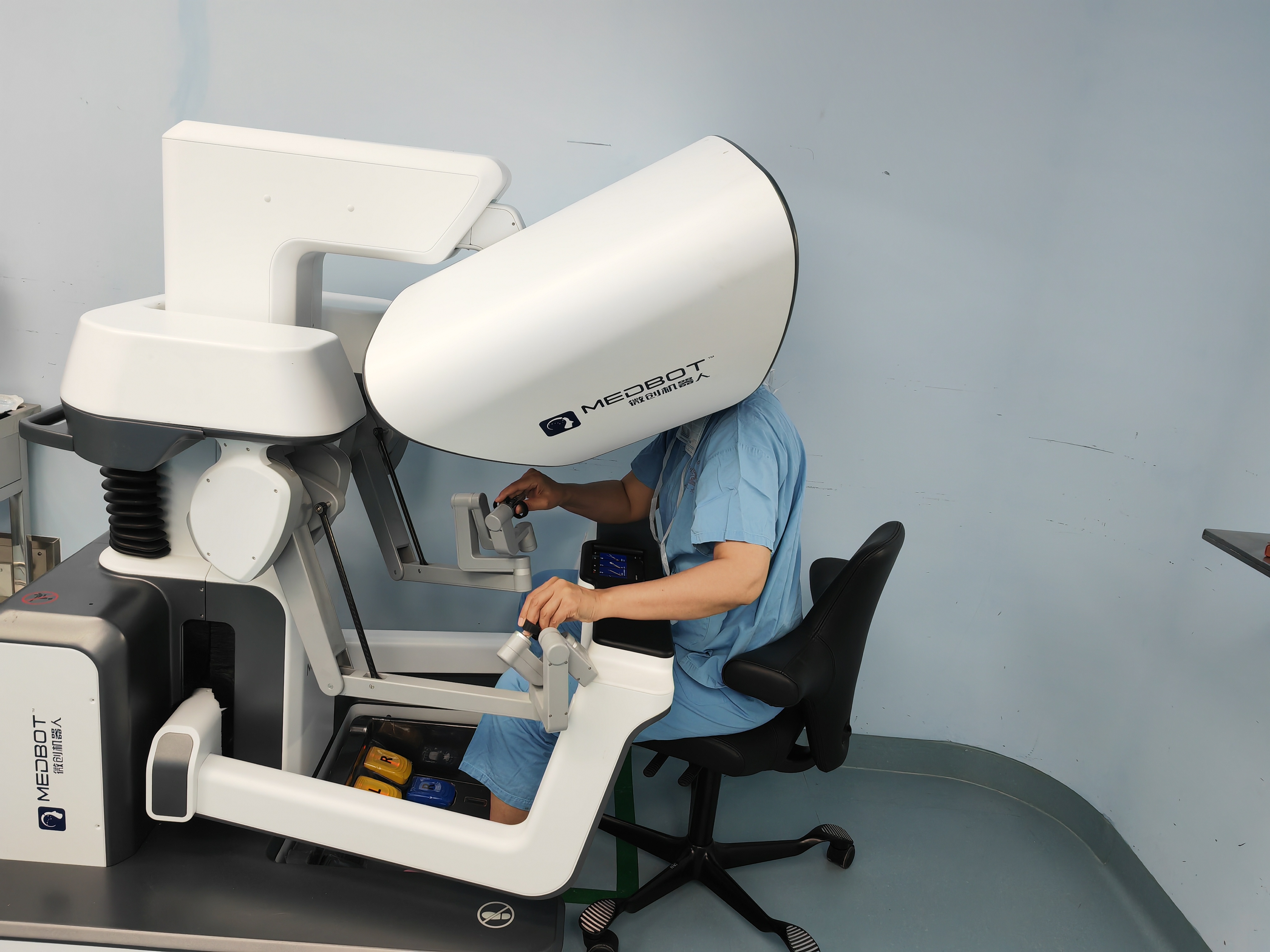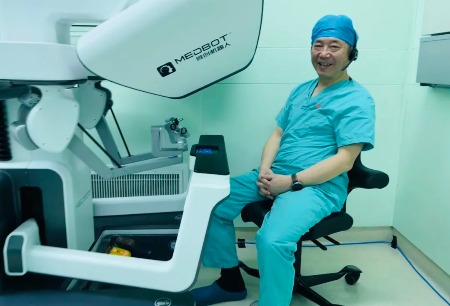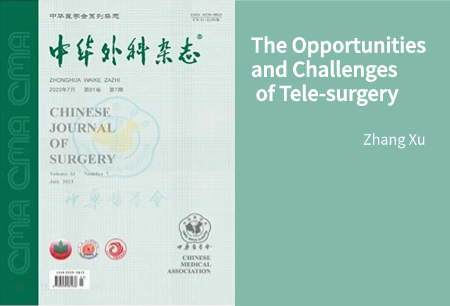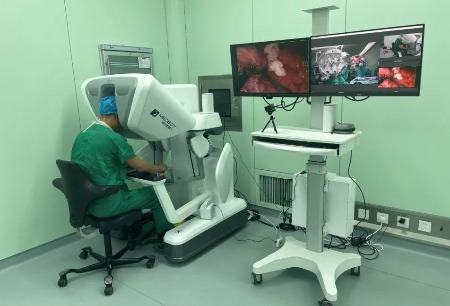Hainan, China — On October 30th, Sanya Women and Children's Hospital (Shanghai Children's Medical Center, Hainan Branch, affiliated to Shanghai Jiao Tong University School of Medicine, also known as Sanya Maternal and Child Health Hospital) completed a robot-assisted surgery in removing a huge uterine fibroid + bilateral salpingectomy. This is the first gynecological robot-assisted laparoscopic surgery completed by Sanya Women and Children's Hospital, and also the first time that Toumai® robot assisted in gynecological surgery in Hainan. This not only opens a new chapter in that hospital's minimally invasive gynecologic surgery, but also means that the multidisciplinary clinical applications of Toumai® robot has made new breakthroughs in the southernmost province of China. The hospital stated that in the future, it would take full advantages of this advanced Chinese-made surgical robot to perform more cutting-edge surgeries, bringing smaller trauma and less bleeding, benefiting children and female patients.


Ali (pseudonym), a 46-year-old female, was diagnosed with uterine fibroid during a vaginal ultrasound examination 10 years ago. She was not feeling discomfort as the fibroid was small. Subsequent re-examination by transvaginal ultrasound found that the fibroid gradually enlarged, and the menstrual flow increased progressively in the past 4 years, accompanied by fatigue and dizziness. Recently, Ali experienced abdominal distension and discomfort, and visited the Gynecology Department of Sanya Women and Children's Hospital. Vice Chief Physician Jing Ning performed careful examination and found that Ali was suffering from a huge fibroid of about 10cm. The uterus resembled more than 4 months pregnancy as the uterus had grown into the uterus, which was termed type I submucosal fibroid.
Due to long and excessive menstrual flow, Ali suffered from severe anemia, requiring transfusion for correction. Vice Director Jing Ning immediately arranged for admission of Ali. Given that Ali's fibroid was a huge type I submucosal fibroid, who was currently nearing menopause, it is recommended to have the uterus removed after sufficient communication. Usually, physicians would choose laparotomy for such a huge uterine fibroid that poses great difficulty to traditional laparoscopic minimally invasive surgery. However, laparotomy is much more traumatic with slower recovery. Vice Director Jing Ning reported Ali’s condition to Director Liu Na, a Shanghai gynecologist and expert resided at Sanya Women and Children's Hospital. After discussing and communicating with experts from Shanghai First Maternity and Infant Hospital, it was ultimately decided to perform minimally invasive surgery for Ali using Chinese-made Toumai® robot.
“The fibroid in the uterus is huge and occupies most of the pelvic cavity. Traditional laparotomy may cause significant trauma, leaving long scar. If laparoscopy for minimally invasive surgery is chosen, its operational limitations may lead to surgical blind spots. On the other hand, robot-assisted laparoscopic surgery has advantages such as minimal trauma, less bleeding, and fast recovery. Toumai® robot is equipped with advanced imaging systems that can provide a high-definition FOV with 10x optical magnification, enabling autostereoscopic imaging; The robotic arm system that performs surgical operations has 7 DoFs, which can stably filter out physiological tremors of the surgeon's hand. With unparalleled flexibility, accuracy and stability in contrast to human hands, the surgical instrument of rotatable wrist can assist surgeons in various difficult and complex operations in a narrow cavity, allowing them to fully utilize their surgical skills and abilities to complete precise and complex surgeries. We must live up to the trust the patient places in us and try to enhance treatment effectiveness while improving their quality of life.”
On October 30th, the surgery was performed as scheduled. Prof. Xiaoqing Guo, chief gynecologist of Shanghai First Maternity and Infant Hospital, came to Sanya and assisted the team of Director Na Liu and Vice Director Jing Ning, and the team of Nurse Jingjing Wang, to perform robotic surgery for Ali. Assisted by the robot, Director Xiaoqing Guo patiently, meticulously, and accurately completed surgical actions such as dissociation, electrocoagulation, resection, and suturing, minimizing intraoperative bleeding. It took nearly 5 hours to complete the entire surgery successfully, with the removed specimens weighing at 560g. On Day 1 post operation, Ali ambulated with the help of her family member and moved around. Currently, the patient has recovered well.
Director Xiaoqing Guo stated that robot-assisted surgery has become one of the most eye-catching and emerging technologies in modern medicine. Its advantages of precise, efficient, and low-risk surgical treatment are being increasingly understood and accepted by more and more hospitals, doctors, and patients. In the field of gynecology, surgical robot can assist physicians in performing hysterectomy, pelvic floor function repair for uterine prolapse and other diseases, as well as surgical treatment for early endometrial and cervical cancer, which greatly improve the effectiveness and service level of gynecological disease diagnosis and treatment, benefiting more patients. To further promote the down-spreading of high-quality medical resources, the Shanghai First Maternity and Infant Hospital is vigorously deploying a remote robot surgery platform. In the future, experts of the Shanghai First Maternity and Infant Hospital can perform surgeries remotely for patients in Sanya from Shanghai. It will further close the medical gap between Shanghai and Sanya, accelerating the process of medical homogenization between Sanya and Shanghai, and contributing to the health of Hainan residents.
Mr. Yu Liu, Executive Vice President and Chief Commercial Officer of the MicroPort® MedBot® Group, stated that:
In this April, Sanya Women and Children's Hospital completed its first pediatric urologic robotic surgery, which is also the first pediatric urologic surgery completed by Toumai® robot nationwide; A few days ago, Sanya Women and Children's Hospital completed the world's first 5G remote surgery in pediatric surgery; Now it has completed its first gynecologic surgery in Hainan. It is the best practice for MicroPort® MedBot® to collaborate and grow together with hospitals in Shanghai and Hainan. It is of great significance for improving the smart, digitization, and informatization process of minimally invasive surgery in hospitals and helping China build a high-level medical and health service system. At the same time, we also hope that in the near future, all parties can continue to deepen cooperation and add new milestones to the development of minimally invasive surgery in China.







 " are registered trademarks of Shanghai MicroPort Medical (Group) Co., Ltd.” . They have been authorized to be used by Shanghai Microport Medbot (Group) Co., Ltd., and no other party shall use such trademarks without prior written permission thereof.
" are registered trademarks of Shanghai MicroPort Medical (Group) Co., Ltd.” . They have been authorized to be used by Shanghai Microport Medbot (Group) Co., Ltd., and no other party shall use such trademarks without prior written permission thereof.
